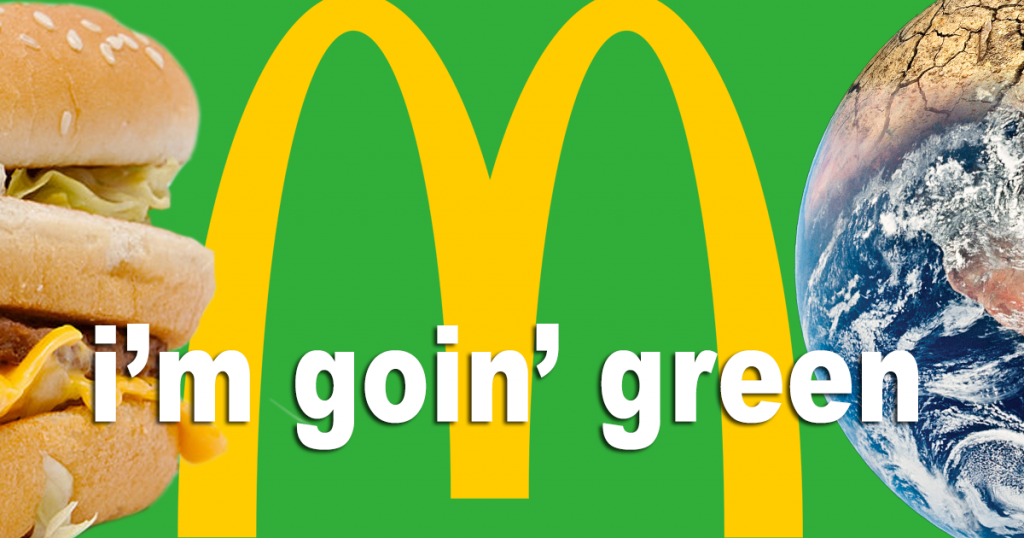This week the National Oceanic and Atmospheric Administration (NOAA) are set to release new information on the planet’s largest ever ocean dead zone. Located in the Gulf of Mexico, the impacted area is expected to stand at more than 8,200 square miles big; comparable to the size of New Jersey.
Tyson Foods has been pinpointed by the report as a major influence in the pollution, due to its large production of animal products. The company supplies major food and retail outlets such as McDonald’s and Walmart which slaughter 35 million chickens and 125,000 cows each week! According to the report by the Environmental Protection Agency, this demand requires 5 million acres of corn for feed and resulted in Tyson alone generating 55 million tons of manure last year, with 104 million tons of run off going straight into water ways within the last ten.
Following the report, it has been found that the highest ever nitrate levels are directly linked to the Tyson and Smithfield meatpackers, however what is perhaps even more concerning is that this pollution is also to blame for contaminating drinking water. The Environmental Working Group’s report from last week showed that over 48 US states had water systems containing high levels of nitrate; a chemical linked to increased risk of cancer.

According to Mighty who released the report, the driving force for this problem is the excessive demand for meat products.
“This problem is worsening and worsening and regulation isn’t reducing the scope of this pollution,” said Lucia von Reusner, campaign director. “These companies’ practices need to be far more sustainable. And a reduction in meat consumption is absolutely necessary to reduce the environmental burden.”
The report from environmental campaign group found that factory farming was the cause of green pastures being converted into soy and corn to feed livestock, subsequently resulting in stripped soils that easily wash away in rain and carry fertilisers into waterways.
“Large parts of America are being plowed up for corn and soy to raise meat,” said von Reusner. “There is very little regulation so we can’t wait for that.”
Mighty are now putting pressure on Tyson and similar companies to ensure that grain producers adapt to more sustainable methods of producing feed including such practices as being more sparing with their use of fertilizers. But will this be enough?
Considering that the average American chowed down 211lbs of meat in 2015, this question is not to be taken lightly.

Further, the US Department of Agriculture reported that beef and pork production is expected to increase substantially over the next ten years. In fact, by 2025, the average American is likely to eat 219lbs of meat a year. Currently, only 3% of US citizens follow a vegetarian or vegan diet.
“Protein consumption is growing globally and we are working to meet increased consumer demand with sustainably and responsibly produced foods and supply chains,” said a spokesperson for grain producer, Cargill.
“We are dedicated to protecting animal welfare, reducing environmental impact, increasing transparency and keeping workers and consumers safe. We also continue to improve livestock feed efficiency. Over the last 15 years we have seen an overall trend in reducing the volume of feed for each pound of beef produced.”
The pollutants caused from the global meat industry are already posing serious problems for the environment and ecosystems alike and are major drivers for global warming, deforestation and the worst ocean dead zone ever to be recorded. The waste run off from animal agriculture cause algae to over grow which when decomposed results in hypoxia (lack of oxygen), killing or stunting the growth of marine life.
With one study saying that the planet has just 5% chance of reaching the Paris climate goal, it can be easy to feel disheartened and overwhelmed. The good news is, we all have the ability to make a difference. Livestock farming produces from 20% to 50% of all man-made greenhouse gas emissions, with meat heavy diets causing the highest carbon footprint at 3.3 tons of greenhouse gas emissions. A vegan diet has the lowest carbon footprint at just 1.5 tons CO2e.
Not sure where to start? Check out our articles on transitioning into veganism or get in touch with the team: hello@livekindly.co
[/et_pb_text][et_pb_social_media_follow _builder_version=”3.0.53″ saved_tabs=”all” link_shape=”circle” url_new_window=”on” follow_button=”on” background_layout=”light” global_module=”4820″] [et_pb_social_media_follow_network social_network=”facebook” skype_action=”call” url=”https://www.facebook.com/livekindlyco/” bg_color=”#3b5998″]

